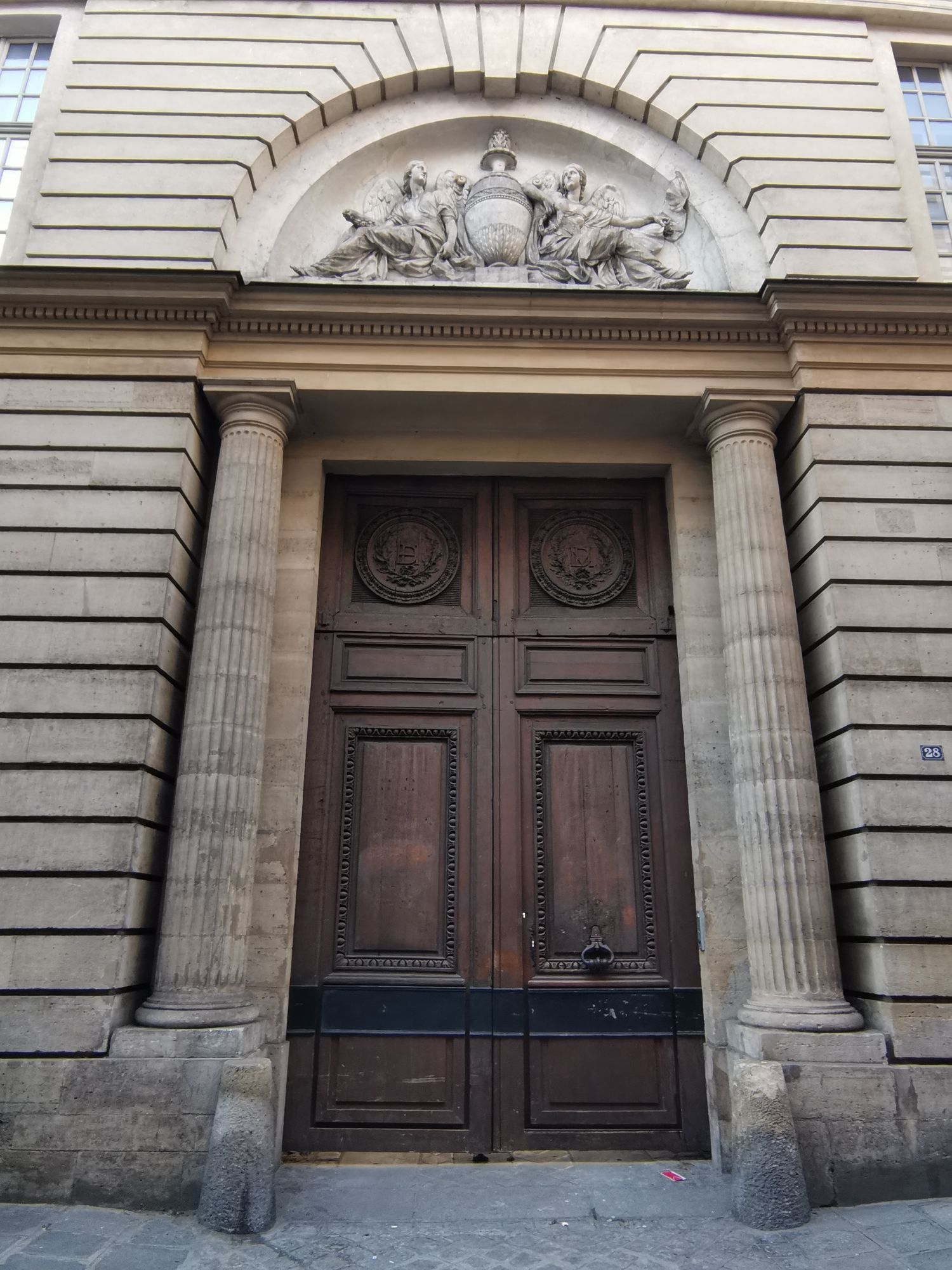Hôtel d'Hallwyll (former Hôtel Bouligneux)

The Hôtel d'Hallwyll in brief
Sold to François d'Hallwyll, colonel of the Swiss Guard regiment, a first hotel had been rented to Necker, a Swiss banker and future Controller General of Finance for Louis XVI. His daughter Germaine, later Baroness de Staël, was born here in 1766.
In the same year, Claude Nicolas Ledoux built the present mansion, already in the Louis XVI style. The street façade is inspired by the antique.
On the courtyard side, the main building is much simpler, but it did feature a Doric colonnade overlooking the garden.
The interior decor has been dispersed: only the staircase remains. Among the hotels built in Paris by Claude-Nicolas Ledoux, the Hôtel d'Hallwyll is the only one not to have been destroyed.
Madame de Staël, a major figure in 18th-century literature and philosophy, was born here in 1766.
Where is the Hôtel d'Hallwyll?
The Hôtel d'Hallwyll is a private mansion located at 28, rue Michel-le-Comte, in the 3rd arrondissement.
The nearest metro stations are Rambuteau and Arts et Métiers.
What is the Hôtel d'Hallwyll?
The Hôtel d'Hallwyll is a private mansion located in the 3rd arrondissement of Paris, more precisely at 28, rue Michel-le-Comte, in the heart of the Marais district.
What is its history?
The history of this building dates back to the Middle Ages, when it belonged to the goldsmith Guillaume Villain. In the early 18th century, the hotel was built for the widow of Louis de La Palu, comte de Bouligneux, a colonel in the Limousin regiment, who lost his life in 1704 at the siege of Verrue in Italy.
What role did Jacques Necker play in this story?
Between 1757 and 1766, the hotel was leased to the Thelusson & Necker bank. Jacques Necker, the famous banker and politician, lived in the hotel and it is also known as the birthplace of his daughter, Germaine, who is more famous as “Madame de Staël.” The latter became a major figure in 18th-century literature and philosophy.
What changes were made to the Hôtel d'Hallwyll?
At some point, Marie Thérèse Nicole Demydorge, daughter of Nicolas François Demydorge, and her husband François Joseph d'Hallwyl, inherited the hotel. They commissioned architect Claude-Nicolas Ledoux to remodel the hotel. Ledoux is the only surviving example of Parisian domestic architecture built by this great architect.
What architectural and landscape features are important in the Hôtel d'Hallwyll?
Claude-Nicolas Ledoux made numerous improvements to the hotel, notably to the façade, garden and interior decor. The façade is symmetrical and monumental, with architectural elements inspired by the Italian Renaissance, such as Tuscan columns and a tympanum adorned with Graces. The garden is a true work of landscape art, featuring an atrium lined with galleries of Doric columns and decorative elements such as upside-down urns pouring water.
What has happened to the Hôtel d'Hallwyll over the years?
Over the years, the hotel has undergone several owners and transformations. It has recently been restored to its 18th-century portico and gardens. Although sober, it is considered one of the most elegant hotels of the Louis XVI era.
What is the current status of the Hôtel d'Hallwyll?
Today, the Hôtel d'Hallwyll is a private property that cannot be visited. However, it has been listed as a historic monument since December 17, 1976, guaranteeing its preservation as a witness to a bygone era.
Are there any bibliographical sources to learn more about the Hôtel d'Hallwyll?
Yes, several books have been written on the Hôtel d'Hallwyll and its history, including “Le Marais” by Jacques Silvestre de Sacy, Philippe Siguret, Aline Elmayan, and Jean Sadoul, as well as “Ledoux et Paris” by Michel Gallet, published in the “Cahiers de la Rotonde.”
Back to summary of the Marais mansions